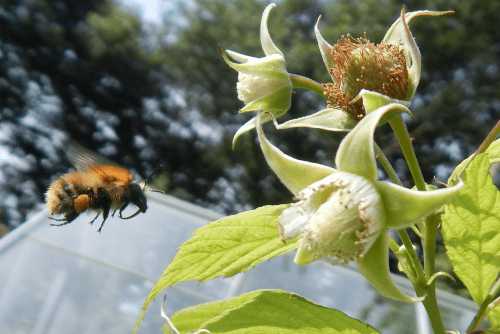Australia's Honey Bees
And Neonicotinoid Pesticides
I have heard it claimed that Australia's honey bees are healthy despite the fact that neonicotinoids are used there.
The question is raised: “If neonicotinoids kill bees, why aren’t Australian beekeepers losing theirs?” or “Neonicotinoids are used in Australia and they have healthy honey bees”.
So
is this true? Is everything hunky dory for Australia's honey bees?
What do we know about Australian beekeepers and their experience of neonicotinoids, honey bees and beekeeping?
|
In
June 2007 a very revealing document was produce by Mr Warren Jones, President
of the Australian Crop Pollinators Association - see right. |
Warren Jones explains about his role:
“I am the President of the Crop Pollination Association Inc. This association represents the beekeeper pollinators that service agriculture's pollination requirements across a broad range of crops in all eastern states, Western Australia,Tasmania and NT, which has no members at present.
We provide representation to AHBIC, the peak body established to represent all sectors of beekeeping.”
You’ll see from the document that Warren Jones’ experience and service to agriculture spans 34 years.
In relation to this issue, of particular interest to me was this comment:
Page 4
“There has been a wide use of neonicotinoids to treat a large range of pasture seed and other seed prior to planting which includes most of our horticulture and vegetable production. Consequently our bees are continually in contact with neonicotinoids from the agricultural environment. We are finding it very difficult to maintain our hives at pollination strength, requiring an increase in use of young queens and replacement nucleus hives to maintain our hives”
By Autumn 2009, Warren Jones comments to The Australian Organic Producer in “Where Have All The Bees Gone?”:
(find it, by copying and pasting this link into a new web page: http://www.bfa.com.au/Portals/0/BFAFiles/AUT09-where-have-bees-gone.pdf )
In this feature, he makes it very clear that he sees neonicotinoids as representing a real threat to Australia's honey bees, and comments:
“Currently in Australia the demand has never been higher for bee pollination but until more control on the use of neonicotinoids is established available bee numbers are unlikely to improve."
Meanwhile, Jeffrey Gibbs, writing on Australia's bees and beekeeping in his article To Australian Beekeepers from an Australian Beekeeper, highlights concerns about neonicotinoids and provides some interesting cultural insight into perhaps why Australian beekeepers seem to have been relatively quiet on this issue – or at least not making a major public fuss. The feature has some interesting quotes too, such as:
“Last October, I was helping Jack Alt of Deepwater, New South Wales shift a sizable load of bees, from a NEONIC seed treated canola plot at Premer NSW. We were shifting the bees back onto clover, closer to Jack's home. Although the bees had been on a bumper crop of canola, Jack was disturbed that his load of 250 hives had suffered premature swarming, loss of queens, loss of bee numbers and dead outs. Jack then replaced queens, kept working the bees (as we all would), and kept the load on clover for the next few weeks. I observed the same hives later on a Silver Leaf [Iron Bark] flow. In my opinion they were half the bees they should have been, or less. This was Jack’s second Adverse Experience with his bees foraging canola over the last two years. I asked Jack “Do you think that this may be because of the seed treatment on canola?” Jack replied, “I don’t think we’ll be working canola anymore.” Jack is concerned about the pollen of Turnip Weed and Salvation Jane coming up afterwards, in the same paddocks.”
(What Jack is perhaps referring to when he says: "Jack is concerned
about the pollen of Turnip Weed and Salvation Jane coming up afterwards, in the
same paddocks" is the fact that neonicotinoids are persistent – i.e.
they remain in the soil after use has ceased.
They can then be taken up by other plants growing in that soil, and because they are systemic pesticides, they permeate the plant as it grows, and the poison may then be presented to bees and other non-target insects, through nectar and pollen, at toxic levels. This effect has been observed in scientific studies, such as Bonmatin et al 2004).
In September 2012, this item was published on the net: Concern from beekeepers prompts review of some insecticides:
“Anxious apiarists have prompted the nation's chemcial regulator to review regulations around insecticides used in the grains, cotton and vegetable industries.
The Australian Pesticides and Veterinery Medicines Authority is examing those products which contain neonicotinoids, a relatively new class of chemcials used as seed dressings”.
Find it, by copying and pasting this link into a new web page:
http://www.abc.net.au/rural/news/content/201209/
s3591361.htm
So contrary to the view that Australia’s bees are having no problem with neonicotinoids, there is evidence that suggests otherwise. Seems like yet another argument to defend neonicotinoids that is not based in truth.
More articles & items:
EFSA report and EU report on neonicotinoid pesticides
